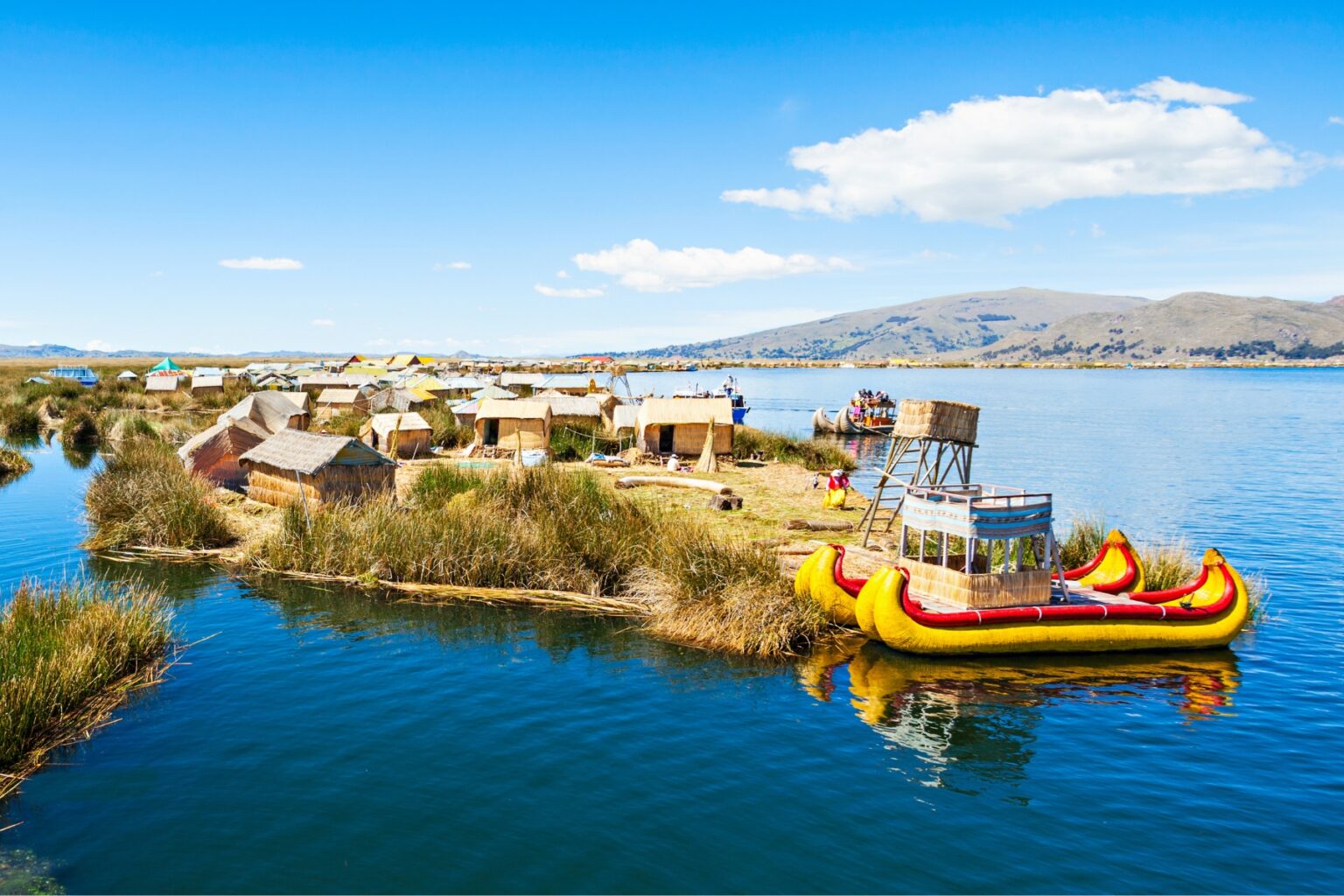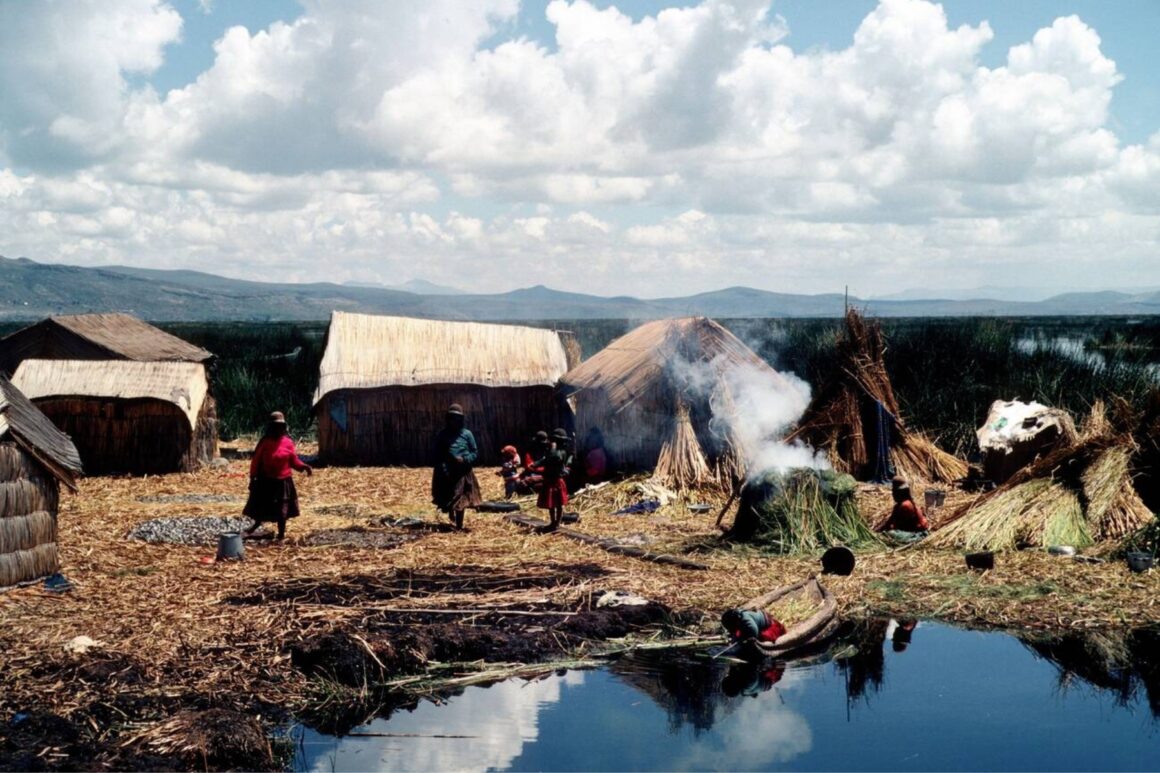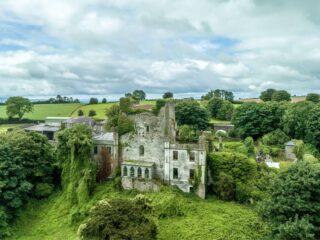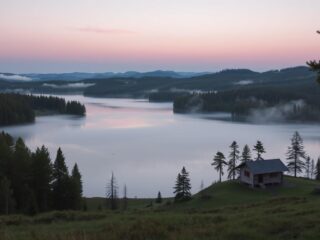A world where land is not solid ground, but a living, breathing platform of interwoven reeds. This is the floating village of Lake Titicaca, a remarkable example of human adaptation and resilience. It sits at 3,812 meters above sea level, challenging our understanding of human settlement.
In the heart of Peru tourism, these islands are more than a destination. They are a living museum of indigenous innovation. The Uros people have turned totora reeds into entire communities that float on the world’s highest navigable lake. This creates a landscape that seems to defy nature’s laws.
Every step on these islands sends gentle ripples through the reed platform. This constant reminder shows the delicate balance between human ingenuity and nature. The islands are not just a tourist spot but a deep expression of survival and cultural preservation.
Key Takeaways
- Lake Titicaca hosts 44 unique artificial islands created by the Uros people
- Floating islands can sustain communities for up to 30 years
- Average temperatures range between 10-14°C (50-57°F)
- Reed islands require continuous maintenance and reconstruction
- The Uros community blends traditional lifestyle with modern technology
The Origin of Titicaca’s Floating Islands
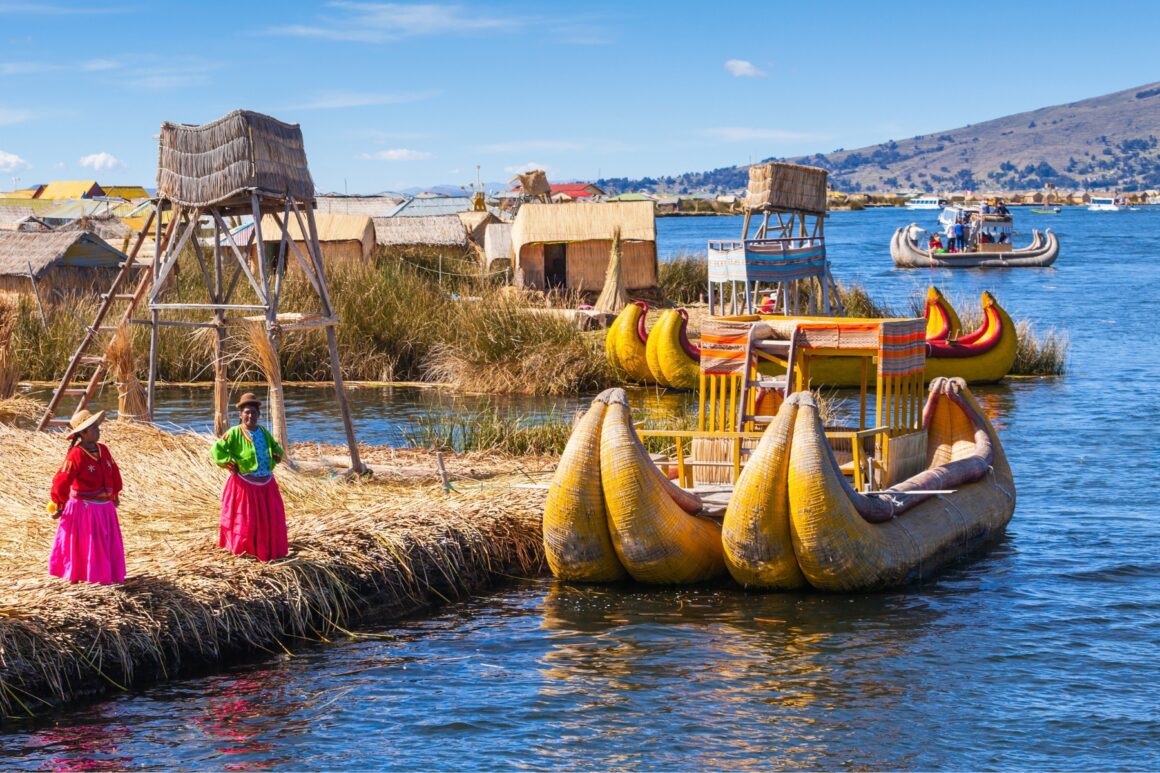
Lake Titicaca, nestled in the Peruvian Andes, is home to a remarkable achievement. The Uros people, an indigenous community, created floating islands to survive. These islands, about 120 in number, show their ingenuity and dedication to their culture.
The Uros people started building these islands over 500 years ago. They did this to protect themselves from invaders. They made the islands from dense totora reeds, which could be moved or defended.
The islands vary in size, from small to large community spaces. Each island has 4 to 10 houses, supporting over 1,000 people. The Aymara culture’s influence blended with Uros traditions, creating a unique culture.
The islands are more than homes; they are a deep connection to nature. Made from thick totora reeds, they need constant upkeep. The residents replace the reeds monthly in dry seasons and weekly in rainy ones.
Today, the Uros people mix old traditions with new technology. Many houses have solar panels, and some islands even have Wi-Fi. This shows their ability to keep their culture alive while moving forward.
Building and Maintenance of Reed Islands
The Uros people are masters at building floating homes on Lake Titicaca. They use totora reeds to create living platforms that move smoothly on the lake. These homes start with big blocks of reeds tied together with traditional ropes.
At the base of each island is a layer called khili, about 1-2 meters thick. Workers weave reed roots and plants to make a strong, floating base. This base can hold whole communities. Today, there are 60 to 70 islands, each home to 5 to 10 families.
Keeping these homes afloat is a big job. New reeds are added every two weeks in the rainy season and monthly in the dry season. This work is done by the whole community, showing their strong bond with their environment.
These islands can last up to 30 years with the right care. Now, they even have solar panels to help with their upkeep. This mix of old and new shows the Uros’ ability to adapt and live sustainably.
The Uros’ homes are more than just places to live. They show a deep connection with nature. They prove that with creativity and hard work, people can thrive in tough places.
Daily Life in the Floating Village
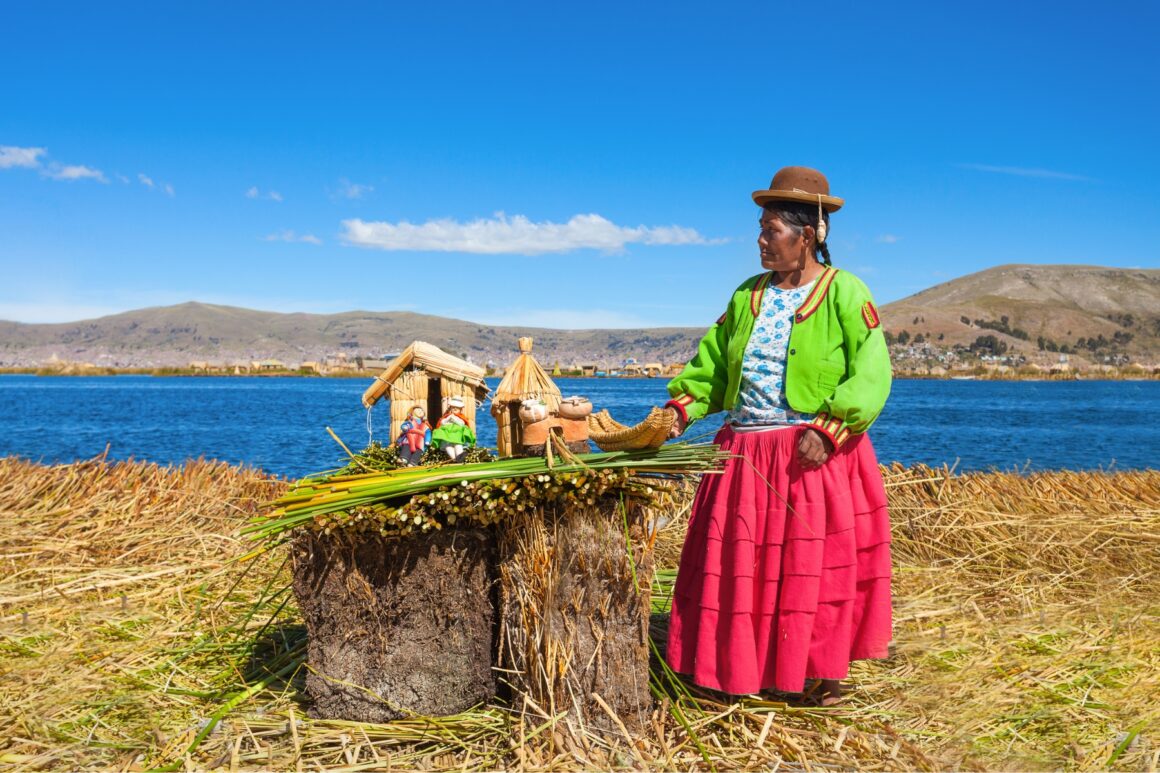
Life on Lake Titicaca’s floating islands has a special beat. The Uros people have made traditional crafts a key part of their lives. This makes their home a unique spot for tourists from everywhere.
Cooking is done outside, with fires heating pots on reed surfaces. Totora roots are important for food and health. Families fish and hunt birds, skills they’ve had for ages.
Children are great at moving around the water, paddling to school in reed boats. They also help with community work. Each island is home to 5 to 10 families, working together for survival.
Traditional crafts show the community’s spirit. People make reed mats, boats, and textiles that show their bond with the lake. Every action tells a story of their ability to adapt and thrive.
The waves under the islands remind us of the balance between people and nature. Life here is like water – always changing, yet deeply connected to Lake Titicaca’s rhythms.
Cultural Traditions of the Uros People
The Uros people of Lake Titicaca weave a vibrant tapestry of cultural survival. Their traditional crafts tell stories deeper than words. They capture the essence of an indigenous community thriving on floating islands for centuries.
Dressed in brilliant costumes of emerald green, fiery orange, and deep purple, the Uros women create. They make intricately woven textiles that bring their unique heritage to life.
Embroidery is a cornerstone of Uros artistic expression. Each blanket, cushion cover, and tapestry is a canvas documenting daily life. Delicate stitches map out scenes of fishing, weaving, and community gatherings – turning fabric into living historical records that connect generations.
Language is another critical thread in their cultural fabric. The Aymara tongue echoes across the floating islands, preserving ancient wisdom and community identity. With approximately 4,000 people maintaining this extraordinary lifestyle, the Uros continue to balance traditional practices with modern challenges.
Tourism has become an integral economic lifeline for these indigenous communities. Visitors witness traditional crafts firsthand, supporting a way of life that might fade. Yet, the younger generation faces a complex choice – between preserving their unique island culture and pursuing educational opportunities in nearby cities like Puno.
The Uros people demonstrate remarkable resilience, adapting while maintaining the core of their cultural identity. Their floating world represents more than a living space. It’s a testament to human creativity, survival, and the profound connection between people and their environment.
Sustainability and Modern Challenges
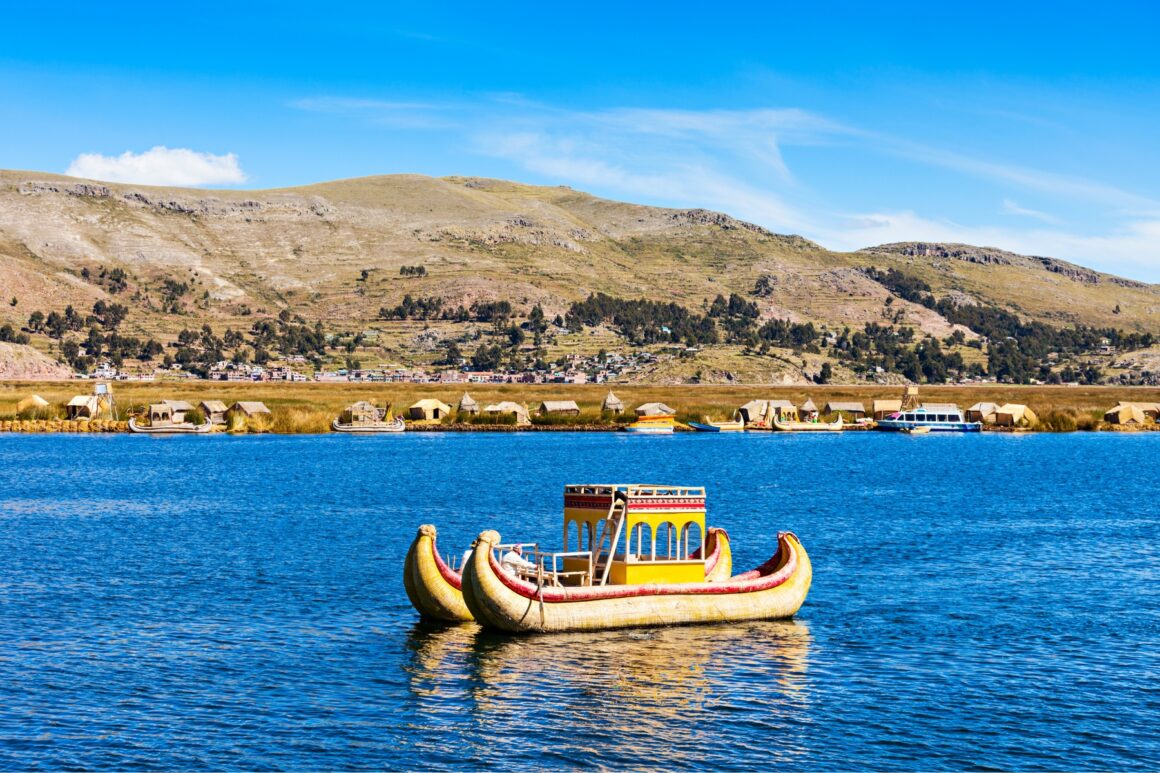
The floating islands of Lake Titicaca are a unique spot where old traditions meet new ideas. They sit high above sea level, showing how people can live sustainably for nearly 3,700 years.
Now, solar panels bring electricity to these old communities. Young Uros people try to keep their traditions alive while using new tech. Each island tells a story of adaptation – with smartphones and traditional weaving side by side.
Tourism is key for the Uros economy. With 91 islands and almost 3,000 people, they’ve found ways to keep their way of life alive. Some islands even offer places to stay, letting visitors see their world and help the local economy.
But, climate change is a big problem for the Uros. Rising water and changing weather threaten their homes. Yet, they’re very resilient, always finding new ways to keep their culture alive.
Their way of living shows us how adaptable humans can be. By using old knowledge and new tech, the Uros keep thriving. They turn challenges into chances to keep their culture and survive economically.
Conclusion: The Floating Village of Lake Titicaca
The Uros floating islands show how people can thrive in tough conditions in Peru. These islands are made of reeds and show the strength of indigenous communities. They live in harmony with nature, blending culture and environment.
Visiting the Uros people is a deep experience in Peru’s tourism. With about 4,000 people on 60-70 islands, they keep their traditions alive. They even have elections to choose leaders, showing their strong democracy.
The future of these islands is uncertain. Young people might leave for Puno, which could reduce the population. But the Uros are skilled in fishing, crafts, and tourism. They might find ways to keep their culture alive.
The floating villages of Lake Titicaca are a symbol of human creativity and our bond with nature. At 3,810 meters high, they are more than a tourist spot. They are a living museum of survival and a lesson in community and adaptation.
FAQ
What are the Uros Islands?
The Uros Islands are floating islands on Lake Titicaca. They are made from totora reeds by the Uros people. Located near Puno, Peru, they show how people can live on floating platforms.
How do the Uros people create and maintain their floating islands?
The Uros build their islands by layering totora reeds. They add new layers as old ones decay. This keeps their islands stable and home-like.
Why did the Uros people create these floating islands?
The Uros made these islands to protect themselves from the Incas. Living on mobile platforms helped them stay safe and independent.
What is daily life like on the Uros Islands?
Life on the Uros Islands mixes old traditions with new ways. People fish, weave, and care for their homes. They also welcome tourists and use technology.
How do the Uros preserve their cultural traditions?
The Uros keep their culture alive through language, clothes, crafts, and community. They teach young ones traditional skills. This ensures their heritage stays strong.
Are the Uros Islands a sustainable tourism destination?
Yes, the Uros Islands are a great place for eco-tourism. It helps the local community and lets visitors see their unique life.
How many people currently live on the Uros Islands?
About 1,200 to 1,500 Uros people live on the islands. Some have moved to the mainland, but many stay true to their traditions.
What challenges do the Uros Islands face today?
The Uros Islands deal with climate change, environmental changes, and modernization. But, the Uros people are very resilient and adaptable.
Photos: Canva Pro

